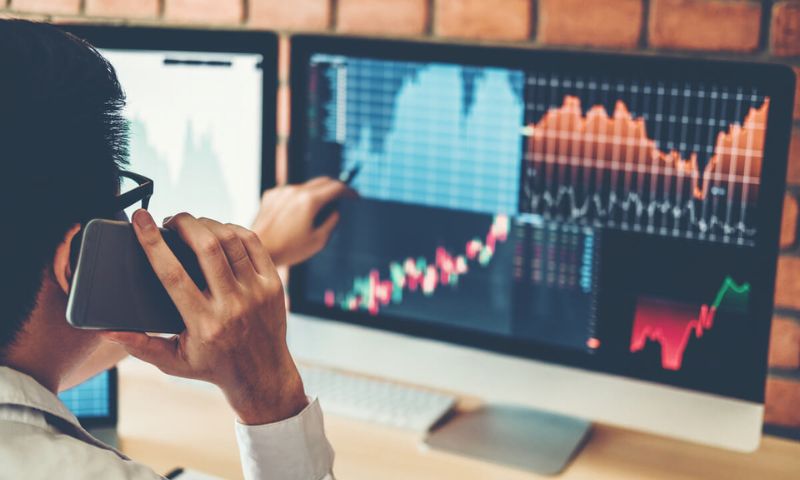Historical trading volume of top crypto exchanges is more than a number; it’s the heartbeat of the market. Imagine a timeline where each tick tells a tale of gains and drops, where fortunes turned on the axis of buy and sell. It’s that epic rise, the highs and lows charted over time that I’m bringing into the spotlight. The crypto landscape has transformed, and knowing its past is like holding a map to its future. Whether you’re a trader, investor, or just plain curious, join me as we unpack these numbers and decode what they mean for your next move. Strap in for a deep dive into the data that’ll change how you see the digital currency space. Now, let’s get ready to explore the trends that have shaped today’s crypto exchange milieu.
The Meteoric Rise of Crypto Exchanges by Trading Volume
Analyzing Volume Growth: From Inception to Current Trends
Remember when buying a coffee with Bitcoin seemed wild? Back then, crypto exchanges were like lone outposts on the digital currency frontier. Fast forward, and their growth is nothing short of mind-boggling.
In the early days, trading volumes were tiny. Now, top crypto exchanges by volume handle billions daily. It’s an epic climb, from mere drops to vast oceans of digital money swirling every second. Early birds like Mt. Gox lit the spark. However, these pioneers often struggled with security and regulatory issues.
New ones learned and adapted. They brought better systems and trust. They gave us clear historical liquidity crypto markets needed. With every trade and tick of the market, they gathered strength. Each month’s trading statistics on blockchain exchanges showed a clear trend upward. Crypto trade volume growth raced ahead, as more folks got on board.
Liquidity analysis on crypto platforms tells a story, too. A market thrives when it’s easy to buy or sell without big price shifts. That’s what we’ve seen. More users and smarter tech made markets smoother. Even during wild price rides, exchanges kept trades flowing.
The Interplay of Historical Data and Year-over-Year Volume Changes
Now, let’s peel back another layer. How do historical volume graphs of crypto help us? They show the pulses of the market, its booms and breaths. We see top exchanges rise, fall, and battle for exchange market share in crypto.
Year-over-year crypto volume change? It’s a roller coaster. Some years shone bright with record highs. Others dived deep with sharp lows. Historical trade volume Bitcoin marks these cycles. So does trade volume Ethereum on exchanges.
Major cryptocurrency exchange reports are gold mines of data. They let us glimpse into daily volume fluctuations in cryptocurrency magic. But it’s not just about the giants like Bitcoin or Ethereum. Altcoin exchange volume trends add color to our trading tapestry.
Each quarter’s crypto exchange review provides fresh puzzle pieces. They help build the full picture of this vast, shifting landscape.
Take a breath. What we see is a world of money in motion, a symphony of numbers. Exchanges zoomed from simple trade posts to complex financial hubs. They channel the energy of global finance through wires and waves, all day, every day.
Let’s remember — this is history still writing itself. The historical trading volume of top crypto exchanges paints a picture of a wild rise. But the future? It’s as wide open as the next trade, the next tide of market desire. Onward, to the next chapter in the digital age saga.
Liquidity Landscapes: A Deep Dive into Market Mechanics
Liquidity Analysis on Crypto Platforms Over Time
When we look back, the growth of crypto trade volume is stunning. In the early days, trading was thin. This means there was less of it, and moves in price could be big. We call this ‘low liquidity.’ Over time, more people and money came in. These changes made markets flow better. It’s like when more water is in a river, it is easier for boats to sail.
What does “low liquidity” mean in trading?
Low liquidity means there are fewer buyers and sellers.
Now there are more trades and the prices don’t jump so much. This is good for traders. Back then, big Bitcoin trades could push its price a lot. Now, not so much. More trading makes prices steadier. This steadiness means you can trade with less risk of a surprising price change.
The volume trends of top crypto exchanges tell a story. They show us how trading grew. We can see it in the numbers each month, each year. Historical graphs, year-over-year change, and monthly stats give us the full picture. Trading data from crypto exchanges is key to understanding this.
The Role and Impact of Liquidity Providers on Market Health
Now, let’s chat about the people who help trading flow: liquidity providers. Think of them as the market’s heart. They pump life into trading by making sure people can buy or sell any time they want.
What do liquidity providers do in the crypto market?
They make sure buyers and sellers can always find a match.
Without them, trades would stop more often. We would be back in the days of low liquidity. These providers sometimes are big players, like banks or funds. Other times, they are folks with a lot of a certain coin. They help make sure the book has enough orders. This keeps trading going smooth.
Liquidity providers are heroes in a way. They take a bit of risk themselves to help everyone else. This kind of support is key to a healthy market. With their help, the market can take big trades without big price shakes.
In sum, crypto markets have grown a lot. They are more stable thanks to more trades and liquidity providers. We’ve seen this in many of the top exchanges by volume. They’ve worked hard to make sure traders can trade with ease. Now, anyone can jump in without worrying about big, sudden price moves. This is crucial to keeping our digital currency exchanges healthy and strong. It invites more people to join in, and then everyone wins.
Trade Volume Dynamics: Spot Versus Derivatives Markets
Spot Trading Volumes: A Snapshot of Leading Crypto Assets
Spot trading on crypto exchanges shows us the raw chance to trade. It’s like trading cards. You get what you trade right then. We see top assets like Bitcoin and Ethereum lead the way. It is no secret that Bitcoin stirs the market. Markets rise and fall on its back. Big trades can make waves felt by all. Small coins often follow the lead of Bitcoin. With Ethereum, we see a kind of ground for tech growth. New projects often build on its technology. This boosts its trades.
We track these trades by volume data. As an expert, I can see patterns unfold. I watch how cash flows in and out. I see which coins people want most. At times, Bitcoin is the star. Other times, new coins take the spotlight. These changes in choice show in the trade data. Over months and years, we watch the shifts. My tools chart these moves, making sense of chaos.
The Surge in Derivatives Trading on Crypto Exchanges
Now let’s dive into the world of derivatives trading. Think of derivatives as bets on the future. You don’t get a coin. You bet on where its price will go. This comes with wild swings and high stakes. Big wins can happen fast. So can big losses.
Derivatives trading has grown lots on crypto exchanges. They let people seek large gains without holding coins. This trading plays with ideas like futures and options. People use these to guess future prices. Or to hedge their bets. It’s like insurance against price drops. The more people trade these, the more the market moves.
Exchange giants now see loads of these trades. The volume skyrockets as more join in. This form of trade adds more chances for profit. But it also brings risks. A sharp move can lead to quick losses. So a smart trader watches out and learns the ropes. With my eye on trade data, I can see when the big plays happen. I see which coins are hot for derivatives trades.
Exchanges fight for the top spot in both areas. They want the most trades to stamp their mark. Spot and derivatives trades need solid systems to run well. The best exchanges grab more traders over time. Knowing the history of these exchanges helps us expect what comes next. We can gear up for the trading game and play to win.
Trading crypto is a bit like a game. You aim to find the best chance for a good trade. But without knowing how the game went in the past, it’s hard to play well. By looking into trade volumes over time, we get a clearer picture. We can plan better. We can trade better. I make sure to give you the view you need to see the whole board.
Optimizing Trading Strategies with Historical Volume Insights
Identifying Peak Trading Periods Through Volume Analysis
Here’s the big scoop on peak trading times! What are the peak trading periods on crypto exchanges? The busiest times are when major market updates drop. Think early morning or late at night, when big news hits or big players make moves.
To nail this, I poured over historical trading data from top exchanges to spot when trading booms. This meant digging deep into the past, tracking how volumes surged or dipped at different hours and days.
Why does this matter to you? If you get the timing right, you could catch the best waves for buying or selling. Peak times often mean more buyers and sellers on deck. So, your trades can happen fast and at prices you expect.
Strategic Implications of Daily Volume Fluctuations and Market Depth
Now, let’s chat about volume changes each day and why that’s a big deal. What do daily volume fluctuations mean for trading strategies? They show us if a coin is a hot item or not. High volume means lots of folks are trading. Low volume spells fewer people at the party.
Trust me, you want to trade when the volume is kicking. This is when you know the market is alive and kicking. You can buy or sell a lot without making waves in the price.
Let’s not forget about market depth. What is market depth and why is it important? It’s a measure of supply and demand in the order books on exchanges. A deep market has lots of orders lined up, ready to go. This means you’re more likely to get the price you want.
You come to markets for the action, right? High volume and deep markets mean you can make your move with confidence. You hop in, do your trade, and hop out, smooth as silk. It’s all about playing smart and using the ebb and flow to your advantage.
In this crypto jungle, staying on top of volume trends is key. It helps you understand the game and how to make your plays. Keep an eye on those historical graphs and reports to make the best calls. Whether it’s Bitcoin or Ethereum, knowing the history helps you ride the future. So let’s use these insights to make smart, swift, and successful trades!
We’ve explored the wild growth of crypto exchanges by looking at trading volumes. From their birth to today’s trends, we saw how trade has shot up. We looked at old numbers and saw big changes year after year.
Then, we dove into liquidity landscapes. We learned how crypto platforms have changed and why those who supply cash are key to a healthy market.
Next, we compared spot and derivatives markets. We saw which leading crypto assets are top in spot trading and how derivatives are booming on exchanges.
Lastly, we used past volume info to find the best times to trade. We saw how daily changes and market depth can help make smart trade moves.
Thinking about all this, remember that trade volumes and liquidity shape your crypto journey. Their ups and downs can guide your choices. Stay sharp and use this info to trade better. The crypto world moves fast, and so should you.
Q&A :
What factors influence the historical trading volume of top crypto exchanges?
Trading volumes on crypto exchanges are influenced by several factors such as market sentiment, price volatility, industry news, regulatory announcements, technological advancements, and overall adoption rates of cryptocurrencies. Additionally, events like new coin listings, partnerships with financial institutions, and macroeconomic trends can also have a significant impact on trading activity.
How can I track historical trading volumes for the top crypto exchanges?
To track historical trading volumes, you can use various financial analytics platforms and cryptocurrency market data websites that provide historical data and charts. Some popular services include CoinMarketCap, CoinGecko, and CryptoCompare. These platforms allow users to view and analyze trading volumes over different time frames for various exchanges and cryptocurrencies.
Why is it important to consider historical trading volumes when trading cryptocurrencies?
Considering historical trading volumes is critical for understanding the liquidity of a market, assessing how easily you can enter or exit positions, and gauging the strength of market trends. Higher volumes often indicate stronger interest and stability, whereas lower volumes might suggest caution, potential manipulation, or periods of consolidation.
What insights can be gained from analyzing the historical trading volume on crypto exchanges?
Analyzing historical trading volumes can provide insights into market sentiment, trader behavior, and the popularity of specific cryptocurrencies or trading pairs. It may reveal patterns of accumulation before a price increase or distribution before a decrease. Additionally, volume analysis helps in identifying significant support and resistance levels within the market.
How is the historical trading volume of top crypto exchanges different from stock exchanges?
The historical trading volume of crypto exchanges can be more volatile and less predictable than that of stock exchanges due to the 24/7 nature of the market, the influence of global traders, and the relative novelty of the asset class. The crypto market also has fewer barriers to entry, and regulatory differences can lead to distinct trading volume patterns compared to traditional stock exchanges.






